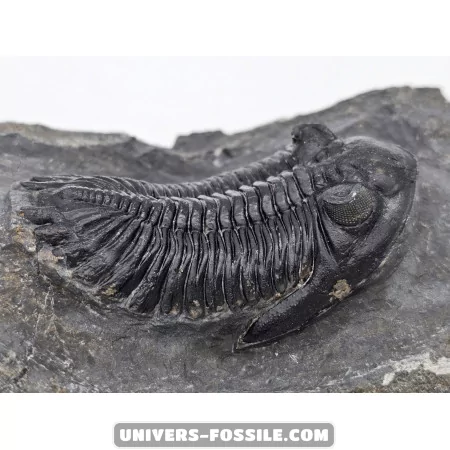Hollardops Trilobites for Sale - Discover The Fascinating World of Ancient Marine Life

Hollardops Trilobites
Hollardops trilobites are an extinct species of trilobites, a group of marine arthropods that thrived millions of years ago. These fascinating creatures were among the prominent inhabitants of the Paleozoic oceans, offering paleontologists valuable insights into ancient marine life.
Anatomy of Hollardops Trilobites
- Segmented Body: Like all trilobites, Hollardops had a body divided into three longitudinal parts - the cephalon (head), the thorax (body), and the pygidium (tail).
- Calcified Exoskeleton: The outer shell of trilobites was formed of chitin and calcite, providing rigid protection against predators.
- Compound Eyes: Hollardops trilobites possessed large compound eyes, consisting of many small hexagons, giving them a panoramic view of their environment.
- Antennae: Although few fossilized specimens have retained their antennae, it is likely that Hollardops had them to detect environmental stimuli.
- Segmented Legs: Trilobites used their segmented legs to move along the seafloor, sifting through the sediment in search of food.
Hollardops Trilobites
Hollardops trilobites, ancient marine creatures from the Middle to Upper Devonian period, roamed the seas around 390 to 370 million years ago. These fascinating creatures were an integral part of the diverse marine ecosystem of their time.
Habitat
Fossils of Hollardops have been unearthed in geological formations across the globe, shedding light on their distribution and evolution. Countries like Morocco, Spain, Germany, and the Czech Republic have yielded valuable insights into these ancient creatures.
Lifestyle
The lifestyle of Hollardops trilobites was centered around the seafloor, where they scavenged for food amongst the substrate. With their segmented appendages, they sifted through detritus and preyed on small organisms, showcasing their adaptive feeding habits.
Although formidable in their own right, Hollardops were not immune to predation. Cephalopod mollusks and predatory fish likely viewed them as a tasty meal, highlighting the complex interplay between different marine species of the Devonian era.
Extinction
As with all trilobites, the intriguing journey of Hollardops came to an end with their eventual extinction. Their robust exoskeletons offered some protection, but the pressures of time and ecological changes led to their disappearance from the world's oceans.
Explore the world of Hollardops trilobites, and immerse yourself in the ancient marine realm that shaped the evolution of life on Earth.
Hollardops Trilobites
The world of trilobites is a captivating glimpse into the ancient seas of our planet. Hollardops trilobites, belonging to a group that eventually became extinct by the end of the Permian period around 250 million years ago, hold a special place in the realm of paleontology.
Despite their extinction, Hollardops trilobites and their fellow order members continue to intrigue scientists and paleontology enthusiasts globally. Their well-preserved fossils provide invaluable insights into the biodiversity and evolution of early oceans, shedding light on the history of life on Earth.
The exact reasons behind trilobite extinction are a subject of ongoing debate among paleontologists. Factors such as climatic shifts, geological events, and evolutionary pressures likely played crucial roles in their demise.
In essence, Hollardops trilobites exemplify the rich diversity of ancient marine life. Their fossils are treasured relics that enable us to journey back in time and unravel the enigmas of prehistoric oceans.
